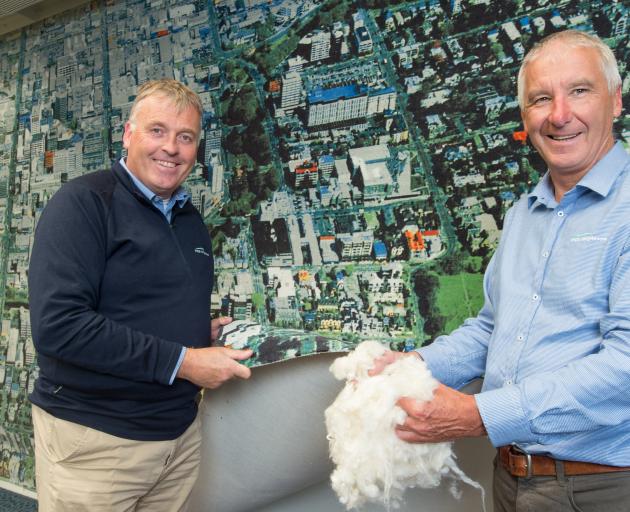
It recently joined PGG Wrightson Wool’s integrity programme following collaboration by the two companies to develop an optimum-quality wool blend for Ege’s carpet printing process.
Palle Petersen, general manager of PGG Wrightson Wool’s inhouse export and marketing arm Bloch and Behrens Wool (NZ) Ltd, said printing enabled much greater detail to be included in the design of a carpet than traditional manufacture, at far lower cost.
Producing the best-quality printed wool carpets required the whitest wool as raw material and New Zealand wool surpassed all others in its whiteness and capacity to take dye.In the past, Ege had used a blend of New Zealand and British wool to provide a higher-bulk yarn. Mr Petersen said they had worked closely with Ege to develop a specific wool blend to meet its requirements, replacing the British component with New Zealand Perendale wool.
Ege now used 100% New Zealand wool, blended in New Zealand prior to scouring, to provide a more consistent quality. Many Ege products used varying mixes of wool and synthetics. Ege, which was founded in 1938, manufactured wool carpet tiles, wall-to-wall carpet and bespoke rugs for domestic and commercial use, including in high-end hotel chains and luxury cruise liners.
Mr Petersen said the volumes involved were reasonably significant. The good thing was that Ege was a successful company and needed New Zealand wool.
"Any increase in their consumption as a result can only be good."
It was one of many companies Bloch and Behrens dealt with and they all played a part in the recovery of the crossbred wool price, he said.
In his latest market update, PGG Wrightson Wool general manager Grant Edwards said export demand for wool had fallen away recently as rising tension between China and the United States over trade tariffs prompted Chinese manufacturers to take a cautious approach to buying requirements.
Although European and British markets for wool remained solid, the significant price lifts the sector needed depended on the volumes bought by China, which were "not happening", Mr Edwards said.
Uncertainty around trade has also impacted the currency, creating another setback for grower returns. Crossbred wool prices now mirrored the low levels they fell to 12 months ago.
Aside from the trade situation around China, market conditions for fine wool growers were favourable. Demand for its use in active sportswear and outdoor clothing continued to grow, while drought in Australia had reduced that country’s national fine wool clip and therefore overall global market supply, he said.


















